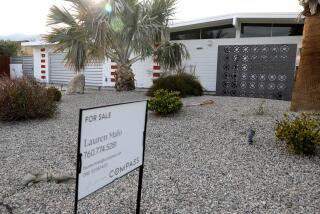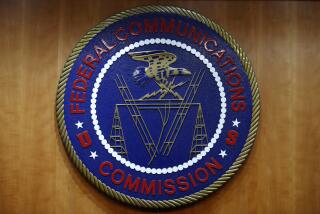Column: Phone industry turns to James Bond for answer to robocall villainy
It’s hard to say what’s cooler here — that the phone industry thinks it finally has a partial solution to robocalls or that some inspired techie gave the system a winking James Bond reference by calling it SHAKEN/STIR.
“That was a geek moment,” admitted Jim McEachern, senior technology consultant with the Alliance for Telecommunications Industry Solutions, a trade group that spearheaded efforts to make SHAKEN/STIR a reality.
McEachern briefed me this week on the latest developments in the battle to put a dent in the roughly 2.5 billion prerecorded robocalls received by U.S. consumers every month.
The problem has reached such epic proportions that many people are dropping their landlines or simply never answering the phone, choosing instead to send all calls to voicemail.
The Federal Communications Commission says robocalls and telemarketers are the agency’s No. 1 gripe from the public, prompting more than 200,000 complaints annually. In July, FCC Chairman Ajit Pai called robocalls “one of the agency’s top priorities.”
For years, agency officials have been prodding industry players to come up with a battle plan. That led to formation last year of an industry-led “Robocall Strike Force,” which in turn asked the Alliance for Telecommunications Industry Solutions what could be done.
And that brings us to SHAKEN/STIR, which the FCC and the telecom industry are now reviewing to see whether it’s feasible. If all goes well, McEachern told me, consumers could see a reduction in the number of robocalls reaching their homes within the next few years.
“We as an industry know this is a huge problem, and the industry is pulling together to address it,” he said.
OK, this is about to get really wonky, so take a deep breath.
SHAKEN/STIR is all about restoring functionality to Caller ID systems. At the moment, robocallers, telemarketers and scammers get around Caller ID defenses with what’s called spoofing, which is when a bogus name or number shows up on your Caller ID screen. It’s relatively easy to do and very hard to prevent.
Free filtering services such as NoMoRobo can stop robocalls from a specific phone line. But robocallers can defeat that by switching to a different line, which they frequently do.
“The ability to control robocalls hinges on validating Caller ID because it’s too easy for the bad guys to spoof,” Henning Schulzrinne, the FCC’s chief technologist, told me.
What the telecom industry is cooking up is a system that basically will issue a seal of approval, or “token,” at the origination of a call and then verify the token at the call’s final destination.
Calls with fully approved tokens would receive a thumbs-up (or a similarly positive icon) on screens. Calls that fail to pass muster would receive a thumbs-down (or whatever).
Any call originating overseas — a shared trait for many robocalls — would be identified on Caller ID screens as coming from abroad.
When a system of this sort was first proposed, it was called Secure Telephone Identity Revisited, or STIR. It was broad-based in scope and included having every phone user receive certification as a non-robocall-making good guy, which obviously wasn’t the most practical approach.
Then the propeller heads at the alliance came up with the token idea, with the service providers — not phone users — responsible for authenticating that callers are who they say they are.
It didn’t take long for the James Bond connection to be noticed.
“STIR already existed,” McEachern said. “So we knew we had to call the new system SHAKEN. We tortured the English language until we came up with an acronym.”
Hence we have Signature-based Handling of Asserted Information Using Tokens, which if you squint real hard kind-of-sort-of collapses into SHAKEN.
Combine tokens with the technological alchemy of algorithms, tracking software, filters and databases, and the idea is that a system can be laid over existing phone networks that will be able to sniff out many (but not all) spoofed calls and, like email spam, flag them for recipients or move them to a junk file.
Before you get too excited, though, there’s one catch: There are roughly 4,000 phone-service providers nationwide, and most would need to participate to make SHAKEN/STIR work.
Also, SHAKEN/STIR won’t be cheap. It could cost hundreds of millions of dollars to roll out across the country, with individual service providers responsible for ponying up tens of millions.
As I’ve been saying all along, it’s not that the phone industry lacks the technical expertise to take on robocalls. It’s that these companies hate the idea of cutting into their fat profits to solve the problem.
Not surprisingly, telecom heavyweights already have asked the FCC for permission to pass along their SHAKEN/STIR costs to customers. If granted, that would mean yet another fee on your phone bill.
Seems to me service providers would be double-dipping if they billed monthly for Caller ID and then imposed a second charge to make Caller ID effective.
Think about it. AT&T’s residential Caller ID fee runs as much as $10 a month. Frontier’s is up to $11. And because of spoofing, neither system is reliable.
So customers should pay extra to fix it?
But let’s cross that bridge when we get there. For the moment, both the industry and the FCC seem confident that the nation’s long robocall nightmare is about to become manageable.
That’s worth a dry Vodka martini, shaken, not stirred.
David Lazarus’ column runs Tuesdays and Fridays. He also can be seen daily on KTLA-TV Channel 5 and followed on Twitter @Davidlaz. Send your tips or feedback to [email protected].
MORE BY DAVID LAZARUS
Buyer’s remorse: Getting out of an unwanted timeshare
Spokeo lawsuit highlights challenge of protecting privacy in digital age
Mnuchin’s wife isn’t the only one defining herself through the brands she promotes







